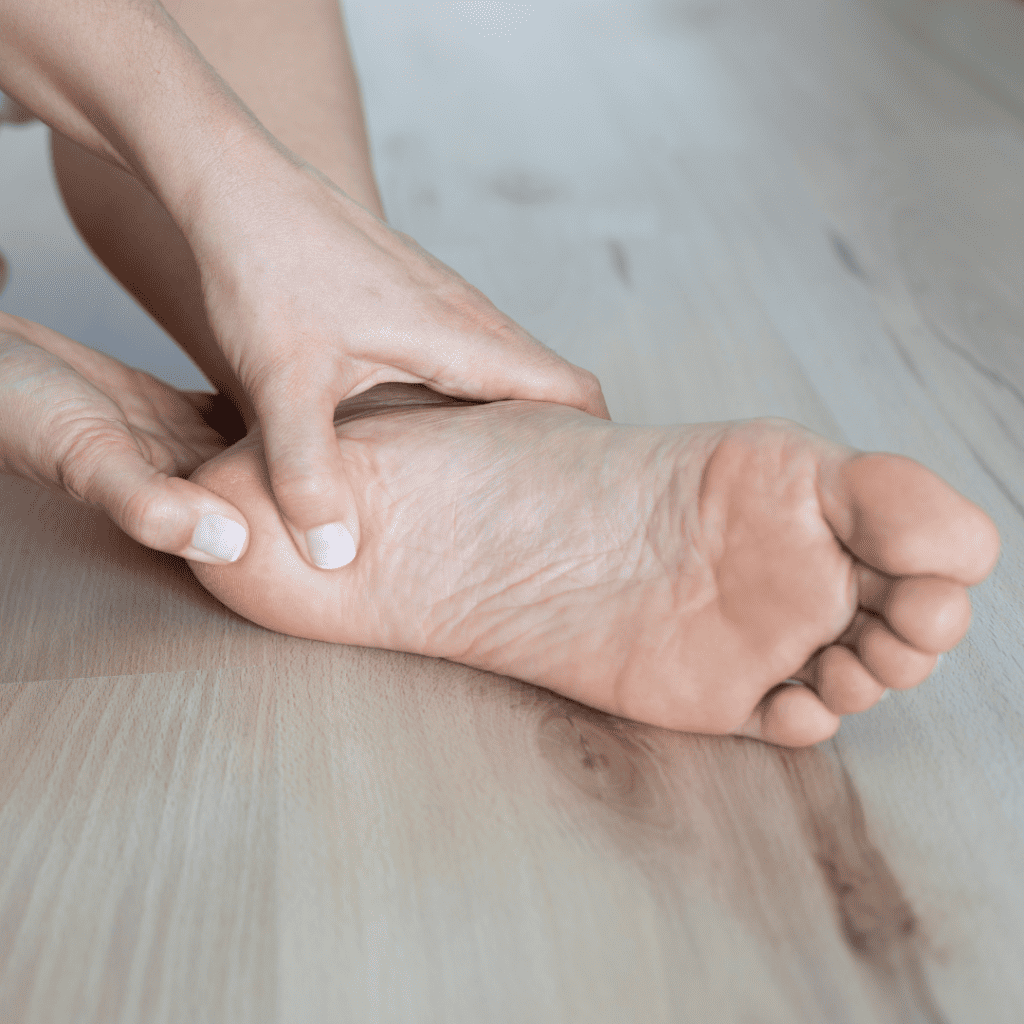Why live with foot pain? The most common foot conditions
Foot pain can be a challenging experience, impacting our daily lives and hindering our mobility. Whether you’re a busy parent, a fitness enthusiast, or someone who enjoys a stroll with the dog, foot pain can be debilitating.
The Common Foot Pain Concerns:
Plantar Fasciitis: One common culprit of foot pain is plantar fasciitis, characterised by inflammation of the tissue connecting the heel to the toes, resulting in a sharp, stabbing pain.
Bunions: Bunions are bony protrusions that develop at the base of the big toe, causing discomfort and difficulty finding suitable footwear. Ingrown Toenails: Ingrown toenails occur when the toenail grows into the surrounding skin, leading to pain, redness, and swelling. Neuromas: Neuromas are benign growths of nerve tissue, typically found between the toes, causing sharp, burning pain.
Metatarsalgia:
Metatarsalgia involves pain and inflammation in the ball of the foot, affecting the metatarsal bones.
Side Effects and Consequences of Neglecting Foot Pain Treatment:
Compromised Mobility: Persistent foot pain can limit your ability to walk, exercise, or perform daily activities, impacting your overall mobility and quality of life. The simplest of tasks can be exhausting.
Altered Gait: Ignoring foot pain may lead to changes in your walking pattern, potentially causing issues in other parts of the body, such as the knees, hips, and lower back.
Chronic Pain and Discomfort: Untreated foot conditions can escalate into chronic problems, resulting in prolonged pain and discomfort.
Infections and Complications:
Conditions like ingrown toenails, if left unaddressed, can lead to infections and more severe complications, requiring extensive medical intervention.
Why Proactive Foot Health Matters:
Prevention Over Reaction:
Emphasise the importance of taking proactive measures to maintain foot health, focusing on prevention rather than reacting to injuries that could potentially be avoided.
Regular Check-ups:
Encourage clients to schedule regular check-ups with a podiatrist, even if they aren’t currently experiencing foot pain. This allows for the early detection and management of potential issues.
Foot-Friendly Lifestyle:
Promote a foot-friendly lifestyle by choosing proper footwear, incorporating foot exercises into daily routines, and being mindful of activities that may strain the feet.
Educational Resources: Provide resources and information on maintaining foot health, empowering clients with knowledge to make informed decisions about their well-being.
Taking Action for Foot Pain Relief:
Self-Care Practices:
Begin with at-home remedies like rest, ice, compression, and elevation (RICE). Stretching exercises and proper footwear can also contribute to relief.
Over-the-Counter Medications: Non-prescription pain relievers and anti-inflammatory medications can help manage mild to moderate foot pain. Always follow recommended dosages.
Professional Treatmepnt Options:
Depending on the nature of the foot pain, professional treatments such as physical therapy, custom foot orthotics, or even surgical interventions may be recommended by a healthcare professional.
Don’t let foot pain dictate your lifestyle. By understanding different variations of foot pain, recognising the side effects of neglecting treatment, and taking proactive steps for foot health, you can prevent injuries and ensure a pain-free, active life. Prioritise your well-being and give us a call today to see how we can help or book online today.








